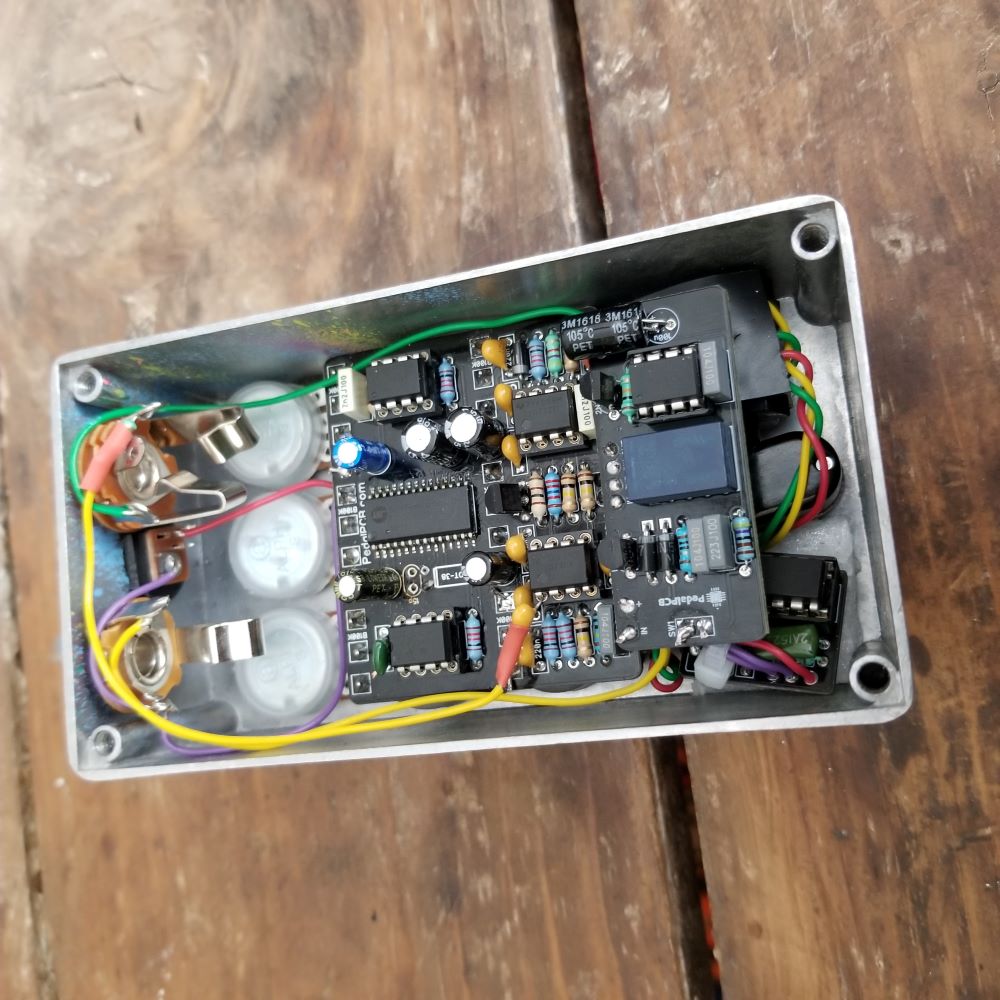p_wats
Well-known member
I've got a couple of the older Arachnid boards laying around (pre-rotary switch), as my wife really prefers the rotary knob for selection patches for her synth setup (I built this double pedal for her a while back), so I figured I'd box one up for myself and try some mods.
Nobody needs to see the under side of the board . All told, it's a full build that is a lot of fun to mess with.
. All told, it's a full build that is a lot of fun to mess with.


- I added the relay bypass board and connected it with pin headers, which makes it super convenient to do. I also did some changes to the filtering to make it more like the newer boards in that regard (not sure i notice a huge difference compared to the super old one I have, but worth a shot).
- The clock module is something I've had kicking around for a while. In this case I added an external pot instead of the trimmer and used a switching jack to allow for an expression pedal input, which is a lot of fun.
- I also used a stereo output jack with the ring connected to pin 1 of IC1 in series with a 1k resistor and 1UF capacitor, for a dry output via an insert cable, which is great for some of the weirder FV-1 patches I've been playing with.
Nobody needs to see the under side of the board




